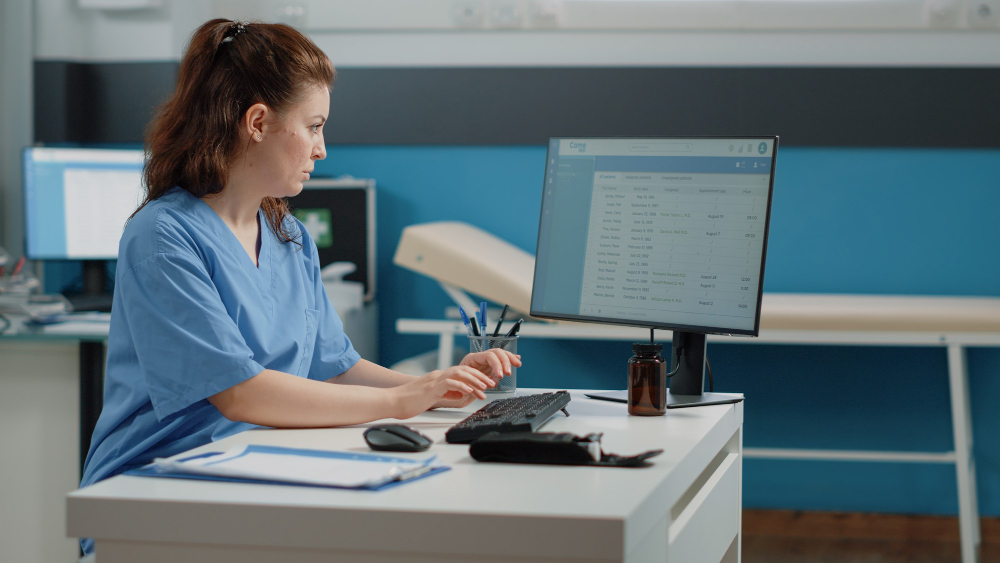Introduction: A World Without Billing Staff?
Imagine a healthcare system where claims are submitted, coded, verified, and reimbursed—automatically. No staff manually inputting CPT codes. No endless calls to insurance companies. Just seamless, intelligent software handling it all in seconds.
Are we there yet? Not quite. But the possibility of fully autonomous medical billing systems is no longer science fiction.
As healthcare becomes increasingly digital, automation is revolutionizing back-office operations. At the forefront of this shift is medical billing software development, which aims to eliminate inefficiencies, reduce errors, and improve revenue cycle management through advanced technologies like AI, NLP, and robotic process automation (RPA).
In this article, we’ll explore what fully autonomous billing might look like, the current technological landscape, barriers to full autonomy, and whether the healthcare industry is ready to take the leap.
The Potential of Autonomous Billing Systems
The vision is clear: medical billing software that can independently handle the entire revenue cycle—from code selection and eligibility checks to payment tracking and appeals. Think of it as a “self-driving system” for healthcare finance.
Why pursue this level of automation?
- Fewer Errors: Manual coding and submissions often lead to mistakes. AI can reduce claim denials by identifying errors before submission.
- Faster Payments: Automated systems accelerate claim processing and shorten reimbursement cycles.
- Cost Efficiency: The U.S. spends approximately $496 billion annually on billing and insurance-related costs—automation could dramatically reduce this.
- Improved Compliance: Autonomous systems can instantly adapt to coding updates (e.g., ICD-11, CPT, or payer-specific requirements) and apply built-in compliance checks.
- Better Focus for Staff: Freed from repetitive tasks, teams can focus on strategic initiatives and patient engagement.
In short, fully autonomous billing could transform healthcare administration by making it faster, smarter, and more cost-effective.
Current State of Medical Billing Software
Thanks to rapid innovation in medical billing software development, we’re already seeing intelligent tools that move us closer to autonomy:
- AI-Driven Coding: Natural Language Processing (NLP) interprets clinical notes and suggests appropriate billing codes.
- Robotic Process Automation (RPA): Automates repetitive workflows like eligibility checks, claim submissions, and status updates.
- Predictive Analytics: Flags high-risk claims before submission, improving first-pass acceptance rates.
- FHIR & Interoperability: Standards like FHIR support better integration with EMRs like OpenMRS, Bahmni, or Epic, enabling real-time data flow.
- Smart Dashboards: Provide insights into billing performance, denial rates, and payer behavior for proactive optimization.
However, most solutions today remain semi-autonomous—they assist but don’t replace human involvement. While they reduce workload and error rates, they still require oversight for complex scenarios, regulatory interpretation, and patient-specific exceptions.
Challenges to Full Autonomy
Why isn’t every hospital already using a fully autonomous billing system? Because reality is complicated.
1. Regulatory Complexity
Healthcare billing isn’t just about codes—it’s about context. Different payers have different requirements, and rules change constantly. Teaching software to adapt dynamically to this variability is still a work in progress.
2. Data Privacy & Security
Billing systems handle sensitive health and financial information. Ensuring HIPAA-compliant encryption, secure APIs, and access control is paramount—especially as autonomy expands.
3. Non-Standardized Payer Systems
There’s no universal protocol for payer integrations. With each insurer operating its own rules engine, APIs, and claims processing logic, autonomous systems struggle to scale across all payers without custom logic.
4. Human Oversight in Edge Cases
Edge scenarios—like unusual diagnoses, appeals, or contested services—require empathy, negotiation, and interpretation. Today’s AI can’t fully replace that judgment.
5. Legacy System Integration
Many providers still rely on outdated EMR and billing systems. Retrofitting these for autonomous workflows is expensive and complex.
Until these challenges are addressed, full autonomy remains aspirational, though not unattainable.
Are We Ready?
From a technological standpoint, we're close. From a cultural and operational standpoint, readiness is more nuanced.
Promising signs include:
- Growing AI literacy among healthcare IT teams
- Wider adoption of FHIR and open APIs
- Blockchain pilots to create tamper-proof billing records
However, trust remains a barrier. Providers need confidence that the software won’t compromise revenue or compliance. Patients need assurance that their billing experience won’t feel cold or confusing.
Gradual adoption through pilot programs, where autonomous tools handle specific aspects (e.g., eligibility checks, recurring claim types), can help build this trust while refining the technology.
Implications for Developers and Stakeholders
For those working in medical billing software development, the shift toward autonomy offers both opportunity and responsibility.
Key focus areas:
- AI Training: Use diverse, high-quality clinical data to train models that adapt to edge cases and payer nuances.
- Interoperability: Build software that connects seamlessly with EMRs, clearinghouses, and payer systems via FHIR and HL7.
- Security-First Design: Prioritize HIPAA compliance, audit logging, and real-time monitoring to protect patient data.
- Payer Collaboration: Work with insurers to standardize submission protocols and reduce friction in automation.
- Transparency & Explainability: Build tools that show how decisions are made, so users can audit and trust them.
Developers who anticipate these needs will shape not just better software, but a more efficient and patient-centric healthcare system.
Conclusion: Closer Than We Think?
Fully autonomous medical billing systems may not be ready to fly solo just yet—but they’re taxiing toward the runway.
With continued innovation in medical billing software development, combined with a deliberate approach to privacy, interoperability, and human collaboration, the next few years could see dramatic shifts in how healthcare handles its most complex financial workflows.
The real question isn’t just Are we ready? It’s How ready are we to build trust in machines managing money and care?





Comments